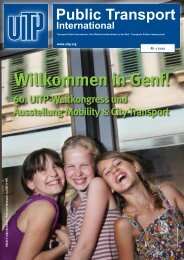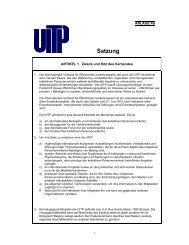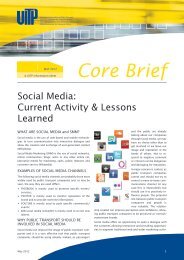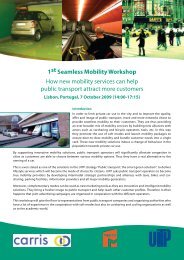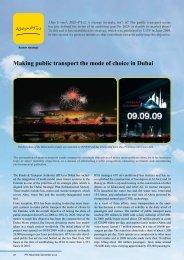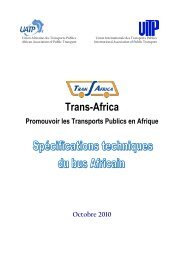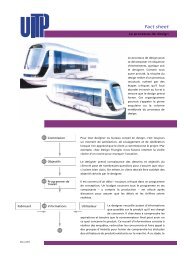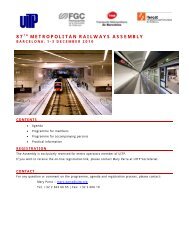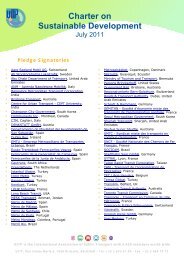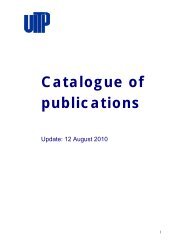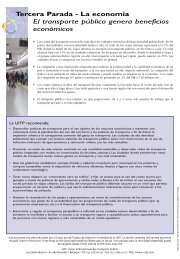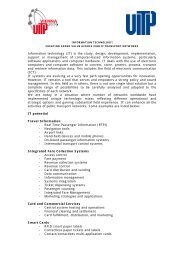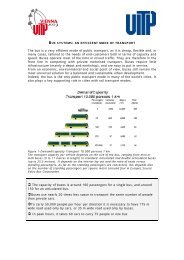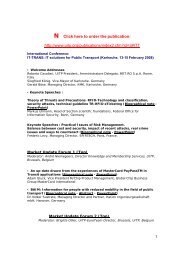Problems Solutions Good Practices - UITP
Problems Solutions Good Practices - UITP
Problems Solutions Good Practices - UITP
You also want an ePaper? Increase the reach of your titles
YUMPU automatically turns print PDFs into web optimized ePapers that Google loves.
Solution 8<br />
22<br />
Making more energy efficient cities by<br />
increasing density and public transport use<br />
<strong>UITP</strong> studies show that the densest cities are also the most<br />
energy-efficient for traffic purposes.<br />
In low-density areas, the car dominates the choice of<br />
transport.<br />
Denser urban areas are more energy-efficient because<br />
they favour:<br />
• Non-motorized trips, as distances are short enough for<br />
people to access jobs, leisure, retails by walking or<br />
cycling;<br />
• Public transport (as shown in the <strong>UITP</strong> Millennium Cities<br />
Database) is more energy-efficient than cars.<br />
Energy Use by Urban Mode<br />
(MJ/Passenger-km)<br />
Mode Vehicles Production Fuel Total<br />
Light Rail 0.7 1.4 2.1<br />
Bus 0.7 2.1 2.8<br />
Heavy Rail 0.9 1.9 2.8<br />
Car, Petrol 1.4 3.0 4.4<br />
Car, Diesel 1.4 3.3 4.7<br />
From production to use, public transport is more energy-efficient<br />
Density vs Energy Consumption<br />
per inhabitants per year for traffic<br />
purposes<br />
0<br />
0 50 100 150 200 250 300 350 400<br />
Putting an end to urban sprawl will lead<br />
to more energy-efficient cities<br />
Energy consumption (megaJ)<br />
120000<br />
100000<br />
80000<br />
60000<br />
40000<br />
20000<br />
Density (inhab/ha)



